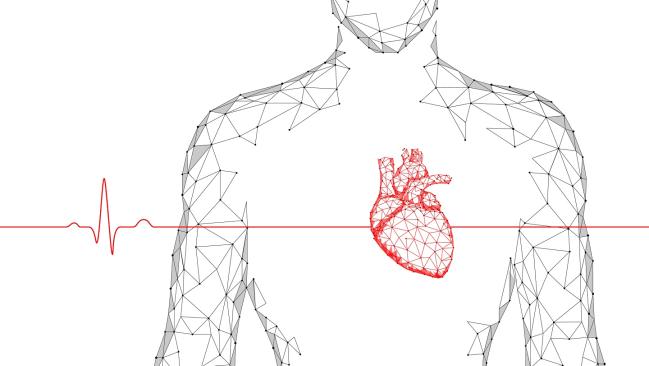LEADR: Small Diameter ICD Lead Meets Efficacy and Safety Thresholds
The data move physicians and patients closer to having a durable “lead for life” that won’t fracture, says George Crossley.

A small-diameter, defibrillation lead that can be delivered through existing commercially available catheters for targeted placement is durable and safe, with no incidence of fractures at 1 year, the LEADR trial shows.
“What we've done in the past with small-diameter defibrillator leads is take a large, complicated lead with multilumens and downsize it—shrink all the elements—and just try to make it smaller. Twice with two different manufacturers it failed badly,” LEADR primary investigator George H. Crossley III, MD (Vanderbilt University Medical Center, Nashville, TN), told TCTMD.
Learning from the failures of those devices—Fidelis (Medtronic) and Riata (St Jude Medical)—led to development of the investigational device (OmniaSecure, Medtronic), which is a lumen-less, catheter-delivered lead that exceeded the primary efficacy and safety thresholds, Crossley reported in a presentation of the LEADR results last week at Heart Rhythm 2024.
At 6 months, freedom from lead-related major complications, the safety endpoint, was 97.1%, with no additional major complications seen through 12 months. Defibrillation efficacy was 97.5%.
With comorbid patients who need defibrillators but are living longer, Crossley said the onus is on these leads to keep going.
“I think this is something that is likely to get us a lot closer to a lead for life in these patients,“ he told TCTMD. “That's what we would dearly love to have, rather than having to extract broken leads and replace them.”
Robert G. Hauser MD (Minneapolis Heart Institute Foundation, MN), the discussant during the trial’s presentation, said the new lead is “off to a good start,” but expressed reservations about durability given that the OmniaSecure was patterned after a pacing lead, the SelectSecure 3830 (Medtronic).
“In time, like the 3830, the OmniaSecure polyurethane insulation will exhibit some environmental stress cracking, and we can also expect some metal ion oxidation and we do need to be vigilant for that reason,” Hauser said.
Crossley, however, said the polyurethane on the OmniaSecure is the same as that in use since the early 2000s on the 3830 device with no clinical failures reported.
Hauser also pointed out that several patients in the study failed defibrillation threshold testing following implantation.
“While some implanting physicians believe defibrillation threshold testing is not necessary at implant, many of us believe that should be done routinely, regardless of lead model, and certainly should be done during OmniaSecure’s implantation,” he said.
LEADR Results
LEADR was conducted at 45 global sites and included 675 patients (mean age 62; 26% female) who had an indication for de novo implant of a defibrillator or a cardiac resynchronization therapy defibrillator (CRT-D). The mean LVEF was 35.3% and 26% of patients had atrial fibrillation.
The implantation success rate was 97.9%, with 99.5% of leads successfully placed in the desired right ventricular position. The low septum was the most common position at 33%, followed by mid septum at 31.9%, apex at 20.1%, high septum at 8.2%, and other at 6.7%.
Among those with defibrillation efficacy at implantation, 82.8% required a single 18-J shock and 17.2% received two consecutive 25-J shocks. Overall, 94 of 97 patients had successful defibrillation threshold testing, yielding a two-sided 95% credible interval of 91% to 98.8% and a posterior probability of 99.8% of exceeding the performance goal.
Of the 20 patients who had lead-related major complications, 19 occurred within 6 months of the implantation attempt and one after the 12-month follow-up. The complications were lead dislodgement in 11 patients, P-wave oversensing in four patients, cardiac perforation in two patients, and a single incident of device capture and another of Twiddler’s syndrome, caused by a patient accidentally or intentionally manipulating the device.
As with the efficacy endpoint, the safety endpoint exceeded the performance goal, with a credible interval of 95.2% to 98.0% and posterior probability of greater than 99.9% of exceeding the performance goal.
Of the 25 leads that had to be explanted during the study, 15 were associated with lead-related major complications. There were no incidents of fracture and no events resulting in death related to the lead.
A secondary safety objective incorporated a simulated patient model. The 12-month fracture-free survival estimate was 99.97%, with a two-sided 95% credible interval of 99.79% to 100%.
Targeted Placement and Future Work
According to Hauser, the P-wave oversensing suggests the need for careful placement of the coil, adding that other concerns at this point with the investigational lead include the need for more data on how well it senses tachycardia and tachyarrhythmia.
“In addition, we need data that demonstrate OmniaSecure’s ability to detect and redetect ventricular fibrillation,” he added.
To TCTMD, Crossley said one of the most exciting things about the lead is the ability for targeted placement, which will be a focus of future research in several areas.
“Being able to put it where you want it is helpful because we can put it in a place where it's relaxed and it doesn't appear to be constraining the tricuspid valve, for example,” he said. “Putting it wherever we want it and, wherever we want, is modestly important right now, but it's going to get much more important in the future as we start to put this defibrillator lead into the conduction system.”
Conduction system pacing for patients is aimed at preventing left ventricular dysfunction long term and possibly even improving it, he noted.
“Our next study will look at this ability to put it in the conduction system and there are lots of questions we have to answer there,” Crossley said. “We certainly don't have the answers for that, . . . but it’s exciting.”
L.A. McKeown is a Senior Medical Journalist for TCTMD, the Section Editor of CV Team Forum, and Senior Medical…
Read Full BioSources
Crossley GH, MD, Sanders P, Hansky B, et al. Safety, efficacy, and reliability evaluation of a novel small-diameter defibrillation lead: Global LEADR pivotal trial results. Heart Rhythm. 2024;Epub ahead of print.
Disclosures
- The study was supported by Medtronic.
- Crossley reports serving as a speaker for Medtronic and Philips; and as a consultant for Medtronic and Boston Scientific.





Comments